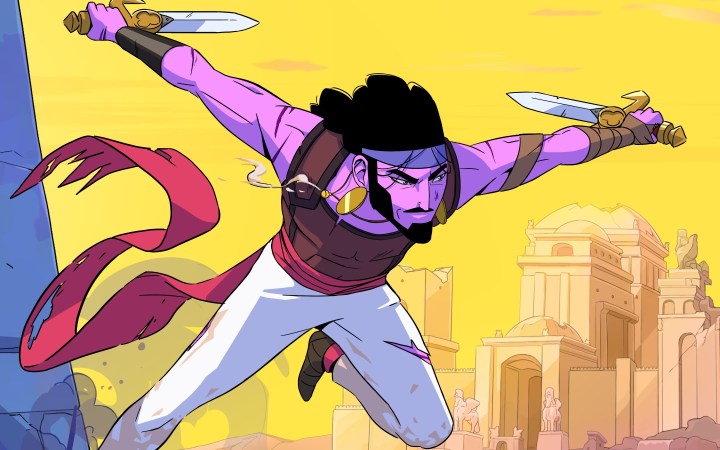
2024 has been a great year for early access video games. Some of the year’s most popular titles, like Palworld and Manor Lords, released this way on Steam, delivering an entertaining experience that will be added to and improved over time. Just this month, Hades 2 surprise launched into early access and is shaping up to be just as enjoyable as its predecessor. Now, another excellent early access roguelike has arrived: The Rogue Prince of Persia.
Announced last month at the Triple-I Initiative Showcase, this game is an action-platformer roguelike developed by Evil Empire, the studio behind much of Dead Cells‘ post-launch support. It also has the full backing of Ubisoft, who owns the Prince of Persia franchise, making this a somewhat unusual move for the Assassin’s Creed and Far Cry publisher. This risky project paid off because, while there is still obviously some room for improvement, The Rogue Prince of Persia is shaping up to be the perfect successor to Dead Cells.
What works
The Rogue Prince of Persia follows a prince who emboldened the Huns to attack Persia. He can’t die, though, as every time he does, he gets sent back in time by his bola. From there, the Prince goes on run after run, fighting the Huns throughout Persia in order to stop them and get home. It’s a premise fitting of a roguelike, as it means the game stars a character who regrets his actions but has to see the impact of them over and over again.

Cues from Hades are taken in how the narrative is delivered, as NPCs in the Oasis the prince respawns in have their own stories and different things to say after every run. It’s not finished yet, but I’m excited to see where this plot goes as Evil Empire expands upon the game. The thing that will really make me stick with The Rogue Prince of Persia is its gameplay, which is very similar to Dead Cells with a few key tweaks.
The Prince has a primary weapon and tool; these default to daggers and a bow at the start of every run, but other weapons can be picked up, along with trinkets that influence his abilities, over the course of each run. Part of the fun comes from seeing what weapons, tools, and trinkets the game throws at me and adapting accordingly. Combat feels great, and there’s depth to learning the right times to dodge, slam into the ground, or kick enemies into each other or spikes.
Killing enemies sometimes gives spirit glimmers, which can be deposited at braziers located in levels and then spent at the Oasis to enable new weapons and trinkets to spawn during runs. On top of the fluid combat, The Rogue Prince of Persia also emphasizes movement; it’s possible to wall-run on background walls, which gives this roguelike a sense of verticality most others don’t have. The different kinds of traps players have to dodge also harken back to the series’ 2D cinematic platform roots in the same way January’s Prince of Persia: The Lost Crown did.

All this is enough to give The Rogue Prince of Persia a distinct gameplay personality when compared to the roguelikes it is clearly inspired by. It also helps that an excellent soundtrack and colorful comic-book-like visuals make The Rogue Prince of Persia a joy to look at or listen to.
What can be improved
As is the case with even the best early access games, there’s room for The Rogue Prince of Persia to grow. The gameplay already feels incredibly polished, and Evil Empire seems to have a clear idea of where it wants the story to go, so no drastic changes are needed for those things. Onboarding is also already intuitive because of the simplicity of The Rogue Prince of Persia’s core mechanics. The main things that can be improved are the content offering and progression.
It already has six biomes, two boss fights, eight weapons, six tools, 30 trinkets, and 13 traversal challenge rooms, which isn’t shabby. That said, repetition did eventually set in for me, especially as I saw pretty much all the different parts of a biome that can be procedurally generated after a couple of runs. This simply won’t be as much of an issue if there’s more for the game to pull from, so I don’t hold that against The Rogue Prince of Persia for now.
The number of weapons, tools, and trinkets is solid right now as well, although the game could better distribute which of those you get as rewards from challenge rooms. There were times when I’d go through the tough platforming challenge only to be rewarded with a weapon much worse than what I already had or a trinket less powerful than the ones that naturally spawned in levels. That wouldn’t feel as bad if progression weren’t so run-specific.
Right now, the only form of progression is spending collected soul glimmers in the Oasis to unlock the ability for new weapons and trinkets to spawn during runs. It’s an OK system, but it means it actually doesn’t tangibly feel like I’d improved that much between runs as a player. It doesn’t help that players will lose all spirit glimmers collected if they die before depositing them at a soul brazier, essentially making everything that happens in that run meaningless.
Despite those qualms, The Rogue Prince of Persia still has excellent bones. When everything clicked and I got a great series of loot drops, it was thrilling to jump through and defeat enemies in the colorful world Evil Empire created. When content and progressions systems are improved, The Rogue Prince of Persia could become an industry-leading roguelike; right now, it’s a very solid early access title.
The Rogue Prince of Persia is available now for PC via Steam early access.



